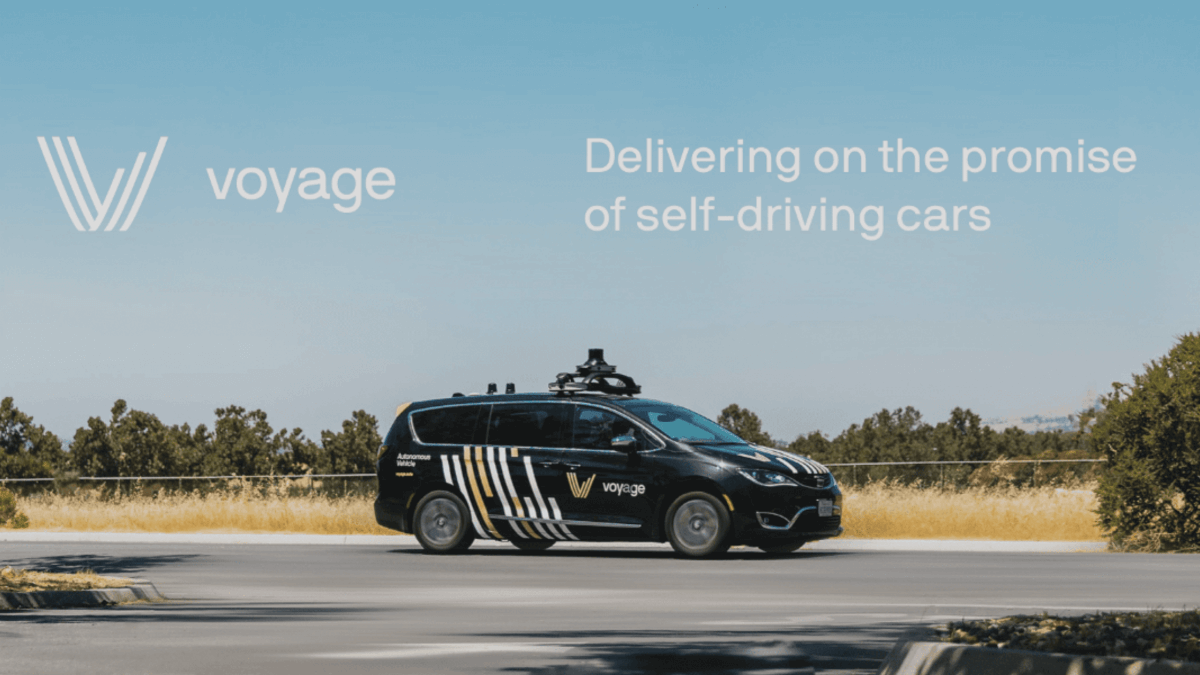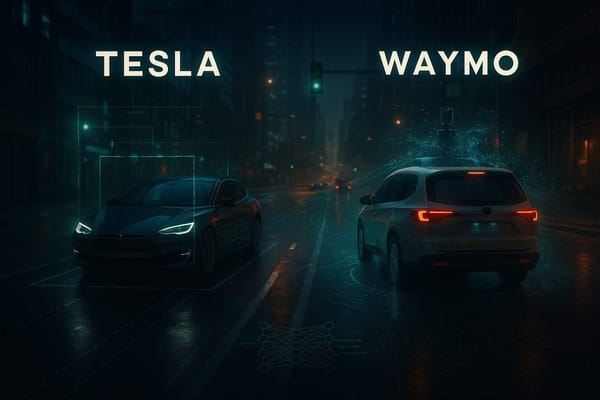Voyage — How to build a Self-Driving Car Startup
Bon Voyage — From French, it translates to Good Journey in English. Voyage means to travel and the company we are going to review today, ‘Voyage’ offers the same and has become one of the most relevant self-driving car company in the US in just a few years.
Voyage has been built by an Udacity Alumni named Oliver Cameron. He’s both an alumni, and the person behind Udacity’s self-driving car Nanodegree program.
In one of his intervention on Lex Fridman’s MIT channel , he talks about how he created Voyage (most images will come from this source).
Today, I want to break this down and analyse each chunk of his approach on building one of the most relevant self-driving car companies out there.
📩 Before we start, I made a Self-Driving Car Mindmap that you can receive if you join the daily emails. You'll receive career tips, technical content, and untold stories from the industry to help you build your dream job.
How it started
When Udacity built its self-driving car Nanodegree program, they wanted to build an actual self-driving car. It took them 6 months to build a vehicle that would drive autonomously in the El Camino Road for 32 miles in San Francisco.
By the time of the success of testing the self-driving car, the team had developed an in-depth knowledge of the self-driving car. It was in 2017 when they finally decided to build their venture on a self-driving car…Voyage.
Voyage Approach to Self-Driving Cars
Voyage, similar to most self-driving car startups, aims to make the roads safer by making autonomous driving mainstream.
The problem: How to build a self-driving car company and not die in the middle?
In 2017, building self-driving cars in San Francisco became a competitive market. Google and Tesla were already on the roads dominating, and other startups stopped after a few months due to funding issues.
So when Voyage’s team quit Udacity to build their startup, a question immediately raised: How to build a thriving company and not perish like the others?
The solution came quite soon: Don’t directly compete.
Building a self-driving vehicle is hard enough, why make it harder by competing against Google?
Waymo (Google) is focusing on hard problems like driving everywhere autonomously (level 5). In autonomous driving, it can be quite easy to drive on the highway, and quite hard to drive in the middle of New York City. When building a company, you get to choose where you’ll work.
Voyage decided to focus on driving in easier and quieter places — Places where no one is in a hurry, and where people have poor access to transportation.

👉 That’s how the idea of retirement communities came.
The needs of the retirement communities are a much easier problem to solve, with no competition, as you can see in the top right quadrant.
Building self-driving cars for the retirement communities is:
- Slow — the speed is often reduced to a maximum of 25 km/h.
- Calm — there are much fewer pedestrians and cars.
- Clear — the path is mostly straight lines
Still Challenging — Retirement communities are made of people who could potentially refuse the self-driving car idea.
Another great advantage is that they’re self-contained.
Convince the person running the community that self-driving cars will be a good thing, and you can do your test there. Most starting companies drive in parking lots; Voyage could drive in the city. This has a final big advantage: you can have exclusivity. It means no competition, at all.
Don’t tread lightly on this “retirement community” idea.
People from the retirement communities have poor transportation systems installed, and most deliberately use their cars even though they shouldn’t… by lack of an alternative.
We built the MILLA Pod around the same idea a few years ago: Some cities don’t have transportation systems, and a self-driving car is the perfect solution.
👉 If you ever want to build a self-driving car startup, just open your eyes, and you’ll be able to avoid most of the competition, fighting for the same piece of meat. Take this 10%… and you’ll make a fortune!
What’s a fortune?
Here’s what Voyage identifies for their market.
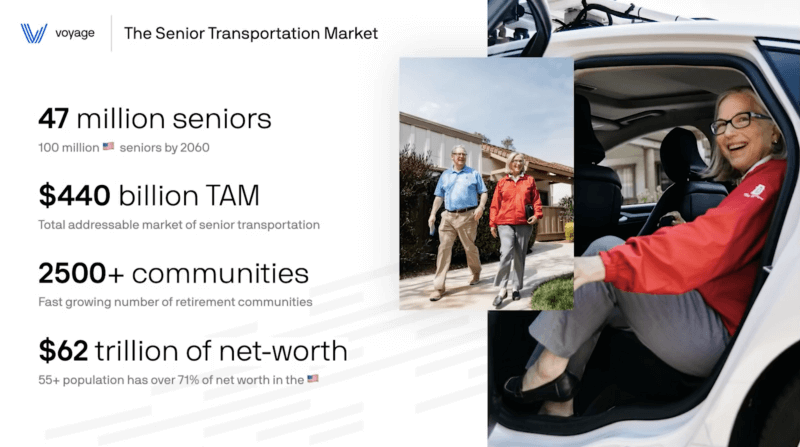
It might be hard to realize the potential.
Let’s take a smaller scale: their first community named The Villages in Florida. This community has 125,000 residents, 750 miles of road, and it means a potentially addressable market of 700M$. Residents there have a buying power of 10.6 B$.
In other words — that tiny percentage no one wants is still a lot of money!
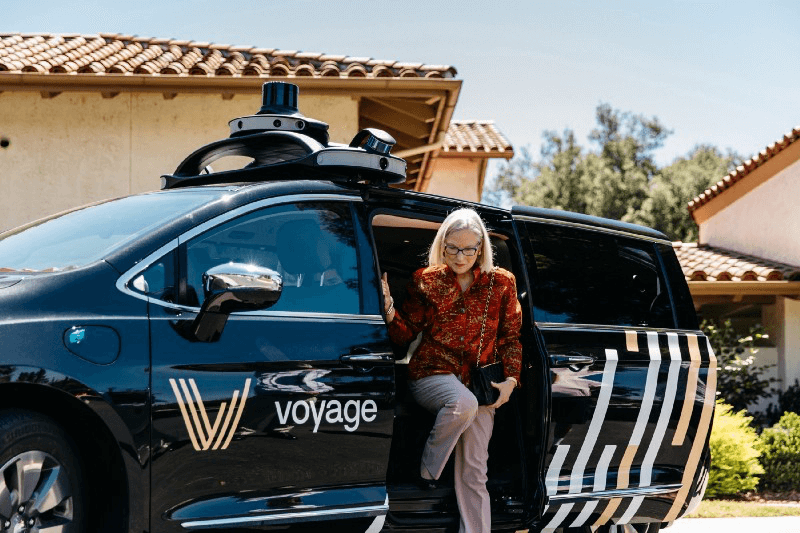
How Voyage Self-Driving Cars Work
Coming straight from Udacity’s team, Voyage’s self-driving car works thanks to a lot of partnerships with other companies.
Applied Intuition, Velodyne, Scale, RideOS, Carmera, and many others made this possible. The whole ecosystem was requested and used.
Since they’re focused on building a service, Voyage uses a lot of LiDARs and tries to get really performant there rather than economically viable.
When building a service, the cost of hardware is more easily made profitable than when directly selling a product. With this approach, they can use a minimum of 4 LiDARs and 8 cameras. RADARs are also included behind the car bumpers.
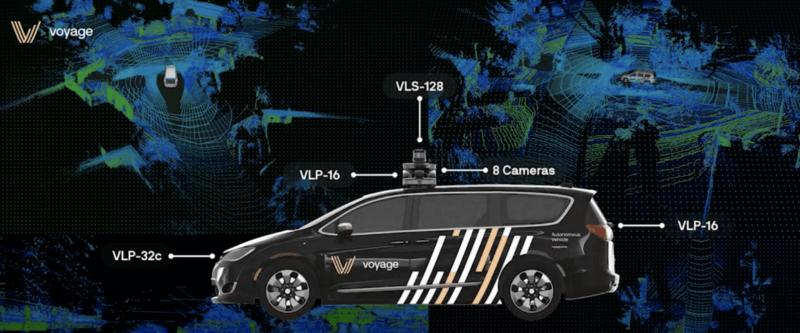
Let’s study the Perception stack —
This is mostly LiDAR, so what’s inside?
In my course Point Clouds Conqueror, I give an introduction to LiDARs, Point Clouds, and generally 3D perception. I mention clustering techniques and help you build these yourself.
In the real world, these techniques have limits. One example is when we confuse two pedestrians with one because of the lack of learning. If only distance is used, then any “dumb” algorithm based on clustering can easily be fooled.
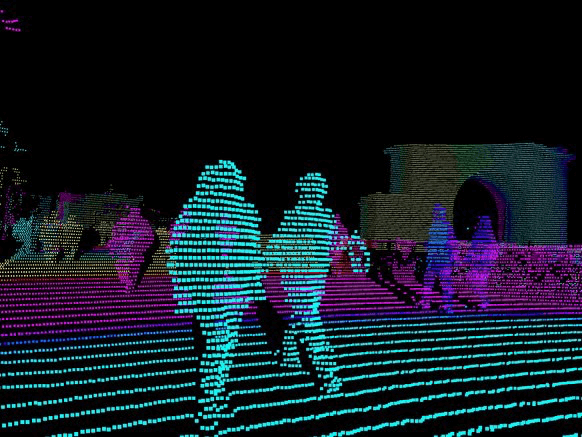
So how to make this better? We can use 3D Deep Learning.
This is what Voyage is doing. There are dozens of 3D Deep Learning algorithms available on GitHub. Just look for “LiDAR Obstacle detection” and you can access these and make them work with real sensors.
Here’s an exhaustive list.
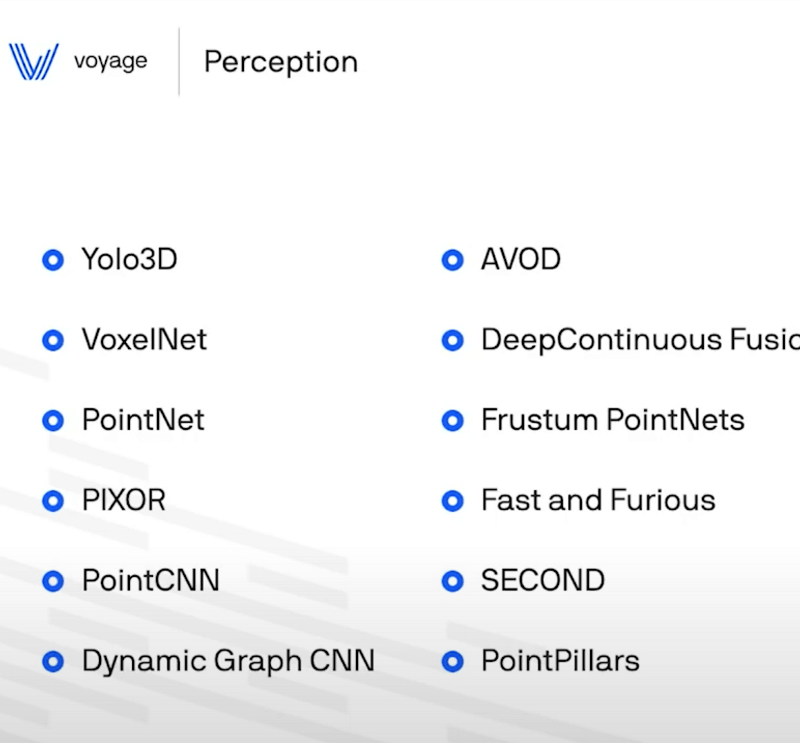
In one of my emails , I mentioned PointPillar as an algorithm created by NuTonomy’s team. Similarly, Apple created something called VoxelNet and UBER ATG released PIXOR. The most popular Deep Learning model, which serves as a base for all of these, is called PointNet. I have an entire course on 3D Deep Learning and PointNet that I invite you to take.
All these learning algorithms have one goal: build a 3D Bounding Box around an obstacle. Eventually, this leads to an amazing detection.
Voyage is working with similar algorithms (if not one of these algorithms) to have a robust and redundant Perception software.
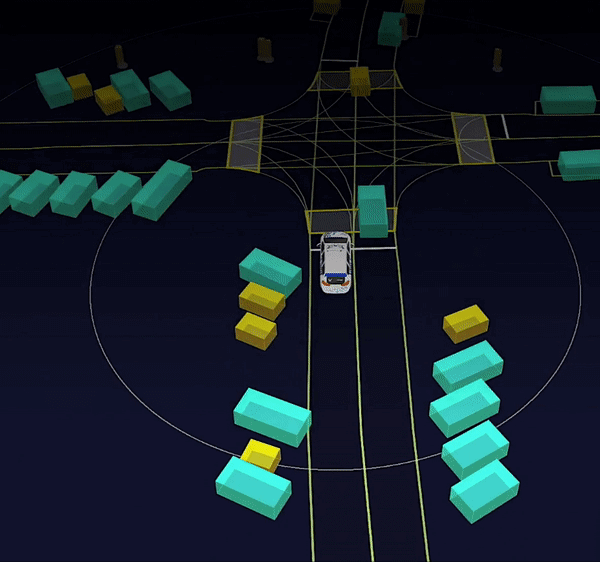
XSense
Voyage also uses a series of sensors called XSense. XSense is integrated with Voyage’s vehicles to provide gyroscopic, IMU, and others. The integrated MTi 100-series can give constant feedback about specific things such as the orientation in the world, the heading, the road slope when going up/down a hill, … It helps the vehicle adjust to provide more comfort to the passengers.
Pedestrian Testing
Before we conclude, here’s a video of Voyage testing their pedestrian detector.
Voyage is an amazing team and company.
They went where no one was, and built a great solution for a promising market. Today, they’re scaling to more and more communities. While the others are competing to get the big cities Voyage is silently taking over the piece of the cake no one originally wanted.
This is how they built their self-driving car company, using the strategy of exclusivity, and building a simple solution for simple needs.
Following self-driving car companies and founders is an awesome way to be close to reality and the field.
❌ Warning — It might be intimidating, so keep in mind that they only give you the best parts 😊
The message is simple: it’s possible.
Oliver Cameron has learned to build self-driving cars online, and he did. He then learned more by teaching with Udacity, and is now building his own self-driving car company. In 2021, Voyage was acquired by Cruise; which then closed in 2024.
BONUS: Here’s the video where I learned all of this and based this article on:
This could happen to you.
If you have a laptop and a wifi connection, you have the ability to do these sort of things, if you put your mind to it.
“How can i start? Where can i start?
I made a Self-Driving Car Mindmap that you can receive if you join the daily emails and it’s FREE.
I built Think Autonomous based on my field experience and with the simple objective to help you join the self-driving car industry.
Whatever you decide, just keep that in mind: it’s possible, if you put your mind to it.

